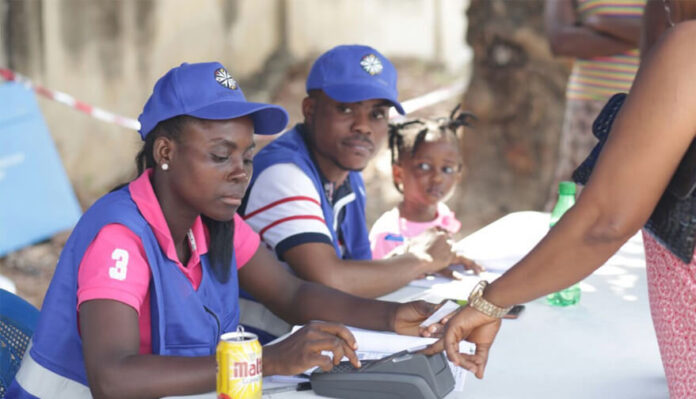
The Electoral Commission (EC) told Ghanaians that, one of the main reasons for compiling a new voter’s register was to introduce the feature of Facial Recognition Verification (FRV) so that people who were unable to verified using their fingers alone could have the option to be verified facially.
The main purpose of facial verification was to do away with manual verification of voters on Election Day at polling centres. This statement was repeatedly made by Dr. Bossman Eric Asare; Deputy Chairperson of the EC and Dr Serebour Quaicoe; Director of IT and Electoral Services of the EC.
Despite the initial resistance by several political parties who preferred a limited voter registration exercise to update the existing voter’s register instead of compilation of a new electoral register, the EC nonetheless went ahead to compile a new electoral register and promised to introduce facial recognition verification functionality that works perfectly and seamlessly alongside biometric fingerprint recognition verification.
But do you know that for the 2020 elections manual verification of voters will still be allowed by the EC using the new BVDs (Biometric Verification Devices)? The most dangerous prospect and scenario for voter identification and voter verification for the 2020 elections using the new BVDs is that an EC Verification Officer (VO) can manually verify a voter without his or her physical presence at the polling station, and can do so just by manipulating and tricking the BVDs for “false” verification of both finger verification and facial verification. Yes, you heard it right!
Now let me take time and take you through the steps of the BVD verification process on Election Day.
- A voter calls at the polling station and presents his/her voter ID card to an EC Officer who checks whether the person’s name is in the electoral register. If successful, the voter moves to the next table where he/she will be verified.
- The voter presents his/her voter ID card to the EC Verification Officer who locates his/her name in the final voter’s register and then scans the QRCODE of the voter captured in the electoral register.
- The QRCODE contains details of only the voter ID of the voter and that is what is used to search for the voter’s electoral data stored on the BVD. Don’t forget that the BVD also contains an SD Card slot that has electoral information of details of the total number of registered voters in that particular polling station.
- After successful scanning of the QRCODE associated with the voter, the information details of the voter pops out on the BVD and a message asks the voter to put his or her right index finger for verification. Now, this is where the manipulation trick can be done. A Verification Officer can do a “false” verification by putting a wrong finger on the scanner. This will be rejected and pave the way to allow for facial verification to be conducted. Again, the Verification Officer can do “false” facial verification. Once both finger and facial verification becomes unsuccessful, the option for manual verification kicks in and the person can be verified manually.
This simply means that on Election Day a VO can scan someone’s QRCODE in the register in his/her absence and trick the BVD by doing false finger verification (i.e. unrecognised finger verification) and false facial verification (i.e. unrecognised facial verification) so that manual verification option kicks-in and then goes-ahead to do manual verification for that person and issue out a ballot paper to anyone to go and cast a vote. This is scenario is possible and very dangerous, and can be done by a compromised EC Official at the polling station!
In the EC official BVD manual, manual verification should only be done with the involvement of representatives of political parties, but the process of manual verification opens the door for abuse by EC Officials at the polling station who maybe acting in connivance with agents of a dominant political party such as the NPP.
The question is, why is the EC allowing an option for manual verification to be done so easily when the touted “fool-proof” facial recognition functionality has been allegedly incorporated in the new biometric election voter management system? Who is the EC trying to fool and play smart with?
Vigilance shall be key in this year’s election and I kindly urge the NDC and other minority political parties as a matter of urgency to call for a comprehensive audit of all the BVDs that the EC will deploy for the 2020 elections.

